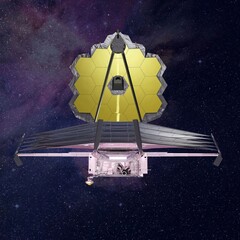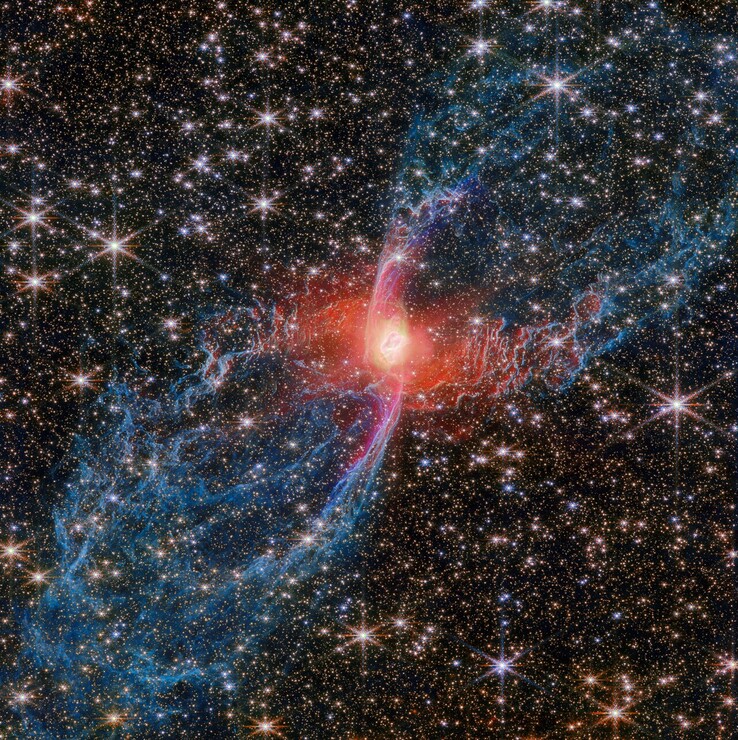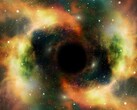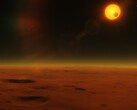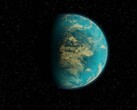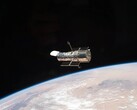Planetary nebulae are formed when a star like our Sun reaches the end of its life. When the star runs out of fuel, it expands into a red giant and throws off its outer layer into space. This exposes the star’s white-hot core. This core releases ultraviolet radiation. The radiation ionizes the surrounding gas that was thrown off, causing the eye-catching red glow seen in the image.
In a previous image of the Red Spider Nebula, the central star appeared faint and blue. But this new image demonstrates how hot that center is. Webb’s Near-Infrared Camera (NIRCam) made this view possible. It captures a clear view of the central star and reveals the hot dust that surrounds it. Astronomers believe the hot dust orbits the central star in a disk structure.
From this image, only one star is visible in the Red Spider’s center. But the nebula’s hourglass shape suggests the possible presence of a hidden companion star. The Butterfly Nebula possesses a similar hourglass shape.
This Webb image also reveals, for the first time, the full extent of the Red Spider’s outstretched lobes. The lobes are shown in blue in this image. They stretch out about three light-years. The lobes were shaped by gas flowing out from the star for thousands of years.
Fast-moving gas flowing out from the central star collides with older gas. The collision forces the outflowing gas to bend and form the purple S-shaped structure seen in the nebula’s center. This phenomenon is responsible for the rippling structure of the nebula.
Observations from Webb GO program #4571 were used to create this image. Observations like these could help astronomers understand how jets and outflows from a dying star shape bipolar planetary nebulae.




